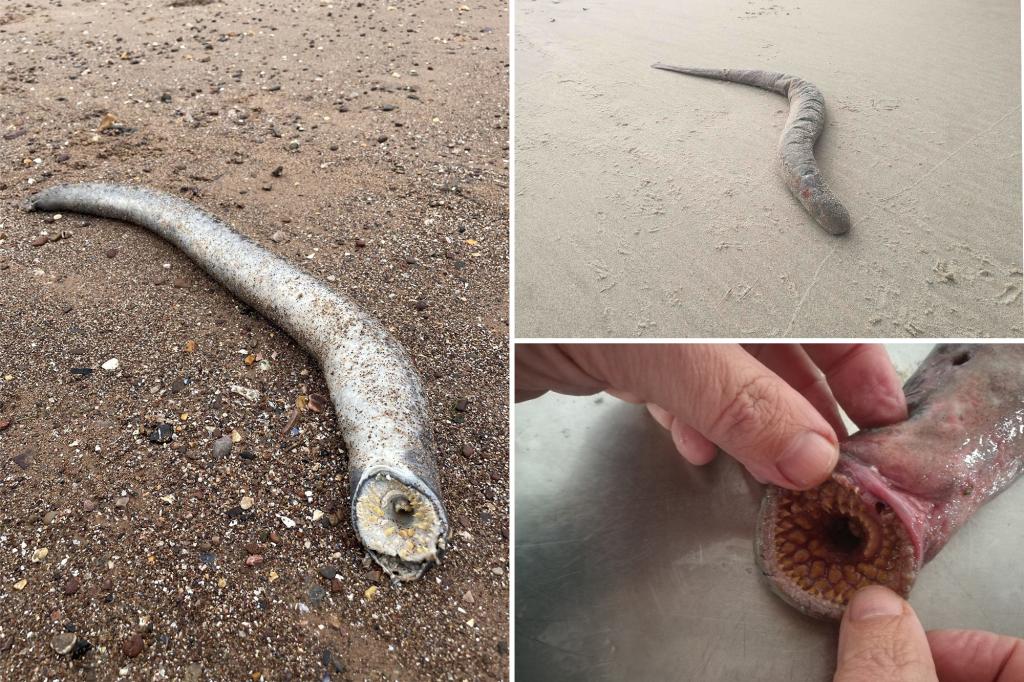Beach enthusiasts were shocked when a bloodsucking marine creature, comparable in size to a child, washed ashore in the UK, drawing parallels to the colossal sandworms. A photograph of this parasitic anomaly created a stir on Facebook, prompting speculation about its identity.
Describing the creature as resembling an oversized leech with a sucker filled with sharp, inward-pointing teeth, the individual who shared the image, Will Miles, 26, recounted his encounter with this maritime oddity to Pen News.
Having stumbled upon the eerie specimen while taking a post-work stroll along a beach in Devon, the warehouse worker from Bovey Tracey expressed his astonishment at its presence near the tideline. Estimated to be approximately 31 inches in length, equivalent to the size of a two-year-old child, the creature featured a slender, eel-like body with rows of undulating teeth reminiscent of Pennywise from Stephen King’s horror masterpiece “IT.”
Intrigued to unveil its true nature, the Brit posted the picture on a naturalists’ Facebook group, triggering a slew of comical and unhelpful conjectures. Some likened it to the subterranean sandworms from Frank Herbert’s renowned sci-fi novel “Dune,” which has been the inspiration for various cinematic adaptations.
Contrary to initial assumptions, the enigmatic creature is identified as an ancient species of cartilaginous fish that sustains itself by feeding on the blood of larger fish and mammals. Sea lampreys, capable of reaching lengths of nearly four feet in marine habitats, exhibit a parasitic feeding behavior involving a toothed disc for attachment and a rasping tongue for blood consumption, akin to the inner jaw of the space parasites in “Alien.”
While human encounters with sea lampreys are infrequent, these creatures have been reported to latch onto swimmers. Although their bites are non-lethal, they can cause discomfort, and untreated wounds may lead to infections.
Sea lampreys, characterized by their anadromous behavior, migrate between saltwater and freshwater for spawning, akin to bloodsucking salmon. These creatures spend five years in the sediment, filter-feeding detritus before metamorphosing into adult lampreys that parasitize larger fish and marine mammals. The decline of this species in the UK is attributed to factors such as poor water quality and obstacles in their breeding rivers.
In the United States, sea lampreys are indigenous to the Atlantic Ocean, Lake Ontario, and the St. Lawrence River but have become an invasive species in the Great Lakes, where they pose a significant challenge.
